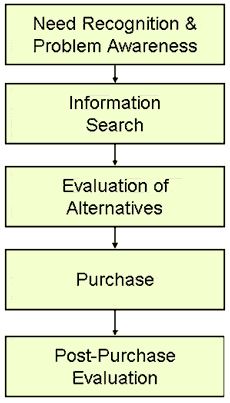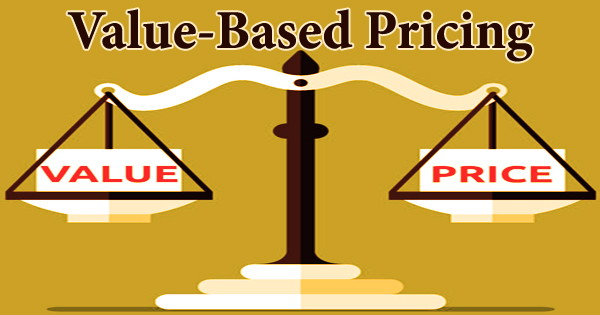Decision making and behaviors of buyers and consumers in the exchange process. Both cognitive- and habit-based models of decision making are reviewed and discussed in terms of when each, or both, are best applied to marketing problems. Specific topics include attitudinal and behavioural theories and data; deterministic versus stochastic patterns of response; the effect of product type and its stage in the product life cycle on decision making and prediction; social and cultural effects; public policy issues; and the influence of marketing activities on the decision-making process of buyers and consumers. Both business-to-business and consumer markets are covered.
These 5 stages are :

- Problem/Need Recognition– This is in general the first stage in which the consumer recognizes that what essentially is the problem or need and hence accordingly a consumer can identify the product or kind of product which would be required by the consumer.
- Information Search– In information search, the consumer searches about the product which would satisfy the need which has been recognized by the consumer in the stage previous to this one.
- Evaluation of Alternatives – In this stage, the consumer evaluates the different alternatives which the consumer comes across, when the consumer was searching for information. Generally in the information search the consumer comes across quite a few products and thus now the consumer has to evaluate and understand which product would be properly suited for the consumer.
- Purchase-After the consumer has evaluated all the options and would be having the intention to buy any product, there could be now only two things which might just change the decision of the consumer of buying the product that is what the other peers of the consumer think of the product and any unforeseen circumstances. Unforeseen circumstances for example in this case could be financial losses which led to not buying of the product.
- Post Purchase Behavior-After the purchase the consumer might just go through post purchase dissonance in which the consumer feels that buying the other product would be better. But a company should really take care of it, taking care of post purchase dissonance doesn’t only spread good words for the product but also increases the chance of frequent repurchase
















